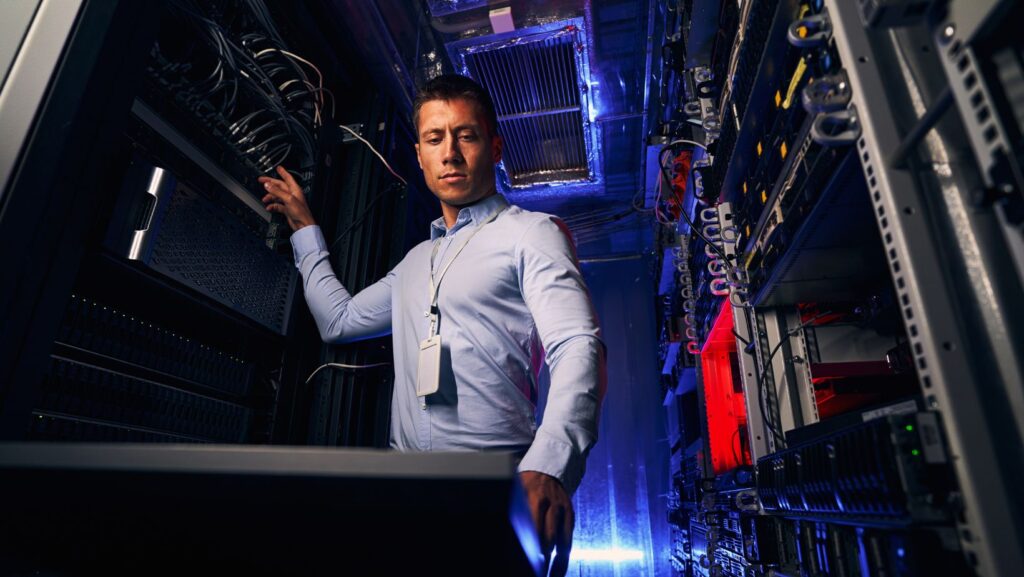In this article, we’ll explore the transformative strategies reshaping modern network infrastructure through sustainability.
Leveraging Energy-Efficient Technologies
The first step in greening your network is to adopt energy-efficient technologies. Modern data centers, the beating heart of network infrastructure, consume enormous energy. This, in turn, contributes to more carbon emissions and higher energy costs for your business.
You can significantly reduce power consumption by implementing advanced cooling solutions, energy-efficient servers, and newer, more efficient network protocols. This will help you spread out your energy use more evenly while lowering some of your costs.
Virtualization technologies also play a crucial role by allowing multiple virtual servers to run on a single physical server, reducing the total number of servers required. This will save you money on server maintenance, too.
Energy-efficient hardware not only lowers energy usage but also decreases heat output, which in turn reduces cooling requirements and further enhances energy savings. Each of these steps contributes to a reduced carbon footprint and operational costs, making a compelling case for their adoption.
Implementing Self-Healing Network Technologies
Self-healing network technologies are at the forefront of sustainable networking. These systems are designed to automatically detect and resolve network faults, significantly reducing downtime and the need for physical interventions.

This capability is crucial for reducing the travel and labor associated with manual repairs, thus minimizing the environmental impact of maintaining network infrastructure.
Moreover, self-healing mechanisms extend the lifespan of network components by addressing disruptions before they lead to hardware failures. This conserves resources and reduces electronic waste, a growing concern in the era of rapid technological turnover.
Designing for Sustainability
Regarding network design, sustainability should be a core consideration, not an afterthought. This involves more than just selecting energy-efficient components—it means designing the network infrastructure to optimize resource use and minimize waste.
This can include route optimization to reduce the length of cabling required, modular hardware that can be easily upgraded without full replacement, and incorporating software solutions that minimize hardware dependency.
Additionally, using renewable energy sources to power data centers is becoming increasingly feasible and economically viable. Investing in green energy solutions such as solar or wind power not only reduces the environmental impact of your network operations but also aligns with global sustainability goals, enhancing your company’s public image.
Cultivating a Culture of Sustainability
Building a sustainable network infrastructure also involves cultivating a culture of environmental awareness within your organization. This means engaging with all stakeholders—from executives to technicians—about the importance of sustainability and how individual actions make a difference.

Training and workshops on sustainable practices can empower employees to make better decisions that align with environmental goals.
Furthermore, extending these practices beyond the organization by choosing to work with partners and vendors who also prioritize sustainability can amplify your impact. Collaborative efforts in sustainability can lead to industry-wide improvements, setting new standards for what is achievable in network infrastructure.
Driving Innovation Through Sustainability
Integrating these sustainable practices into your network infrastructure contributes to environmental preservation and enhances operational resilience. The move towards sustainable networking is a response to environmental concerns and a strategic approach that can yield significant business benefits.
By adopting energy-efficient technologies, implementing self-healing systems, designing with sustainability in mind, and fostering a culture that values green practices, you are positioning your network infrastructure to be robust, resilient, and responsive to the demands of the modern world.

